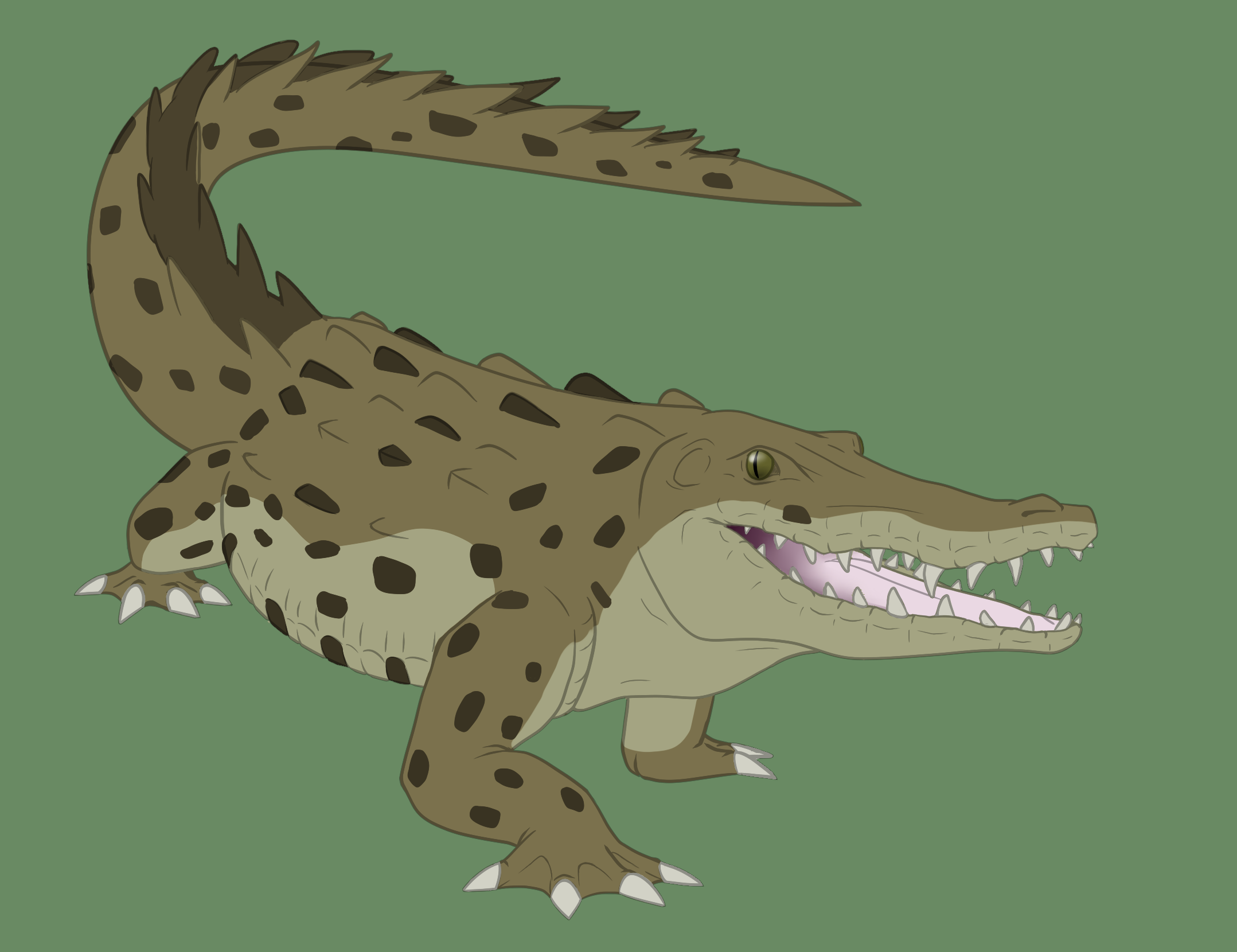Orinoco Crocodile
The Orinoco Crocodile
Pronunciantion: (Ore-in-oh-coe)
Scientific name: (Crocodylus intermedius)
Disclaimer: Due to small population numbers, a lack of research done before they were poached to this point, as well as armed conflict in and around the area which made any expedition highly dangerous, there hasn't been extensive research done on certain aspects of the species, and as such, there are gaps in the accounts of their biology/behaviors, as well as contradictions between research reports that are currently unaccounted for.
Found only in the river basin from which it derives its name, the Orinoco Crocodile is one of the most critically endangered species of crocodilian. As mentioned, they get their name from their home in the Orinoco river basin in Colombia and Venezuela.
If completely unimpeded, the males of the species could grow up to 17ft (the largest ever recorded was around 22ft in 1800) though nowadays, the typical size for a male is around 10 to 14ft (about 3.5 to 5 meters). In the wild, the oldest ones may live to around 50 years, but many researchers have recorded captive crocodiles to live around 70 to 80 years.
For their main habit, they typically stay in and around the basin, the Llanos savanna, and seasonal freshwater rivers. Though there have been unconfirmed sightings on the island of Trinidad (it is suggested that witnesses may have actually seen an American Alligator, mistaking it for the rare reptile, though we have no concrete confirmation on either of these claims).
Despite being such a large reptile, it's been recorded that even when multiple males occupy the same area, they typically don't fight with others of their own species, even forming semi-cooperative groups. Though, around their mating season (which starts some time in October, happens all through November, and ends during December) the species becomes highly aggressive and territorial.
While there hasn't been a lot of research into their diet, since these reptiles are opportunistic apex predators, there isn't much they won't eat. In the early years of development, they start off by eating invertebrates (usually snails), crabs and small fish. At full size, they've been recorded going after birds, mammals and reptiles, even hunting caimans on occasion. But it seems the largest portion of their diet consists mainly of large fish and turtles. Strangely enough, there haven't been many human attacks or fatalities caused by these crocodiles, despite their size and tendency to try and eat whatever they can hunt.
At the moment, due to a lack of in depth research, the estimated numbers remaining in the wild range from 250 to 1500, not accounting for scattered pockets of subpopulations.
Their biggest threat was originally from poaching, as in the 1940's and 60's, thousands were hunted for their hide. In the 1970's they were placed on the protected species list, but even since then, they have not seen a huge resurgence in numbers.
Presently, their greatest threats come from further poaching for their meat and teeth (some people believe that when ground into powder, their sharp teeth have "medicinal properties", the same myth which also threatens the rhino, elephant and pangolin species). They're also under threat from pollution, the trapping of juveniles for the live animal trade, a new dam being proposed, egg collecting (for consumption purposes), habitat destruction, and the invasive spectacled caimans. These smaller reptiles not only wreak havoc on the fish population, but also have a fast breeding rate.
There are a number of zoos and aquariums that have breeding programs and sanctuaries in place to try and bring their numbers back up. At the moment, there are around 50 recorded crocodiles in captivity, and even more in Venezuela based breeding programs, all having seen some success. There are also breeding facilities that collect eggs from nests in the wild and are brought into captivity in an attempt to hatch every crocodile they can for later release (quite the chore, as each of these nests can have up to 70 eggs). The hatchlings that have been produced in these programs have usually been released into national parks, as well as privately owned plots of land for further conservation and research.
Sources:
Wikipedia: https://en.wikipedia.org/wiki/Orinoco_crocodile
Promise for the Survival of the Orinoco Crocodile: a strong commitment from the private sector in Venezuela: https://web.archive.org/web/20070922055654/http://www.tortoisereserve.org/Research/Croc_Article_Body2.html
The Online Guide to the Animals of Trinidad and Tobago (PDF): https://sta.uwi.edu/fst/lifesciences/sites/default/files/lifesciences/documents/ogatt/Crocodylus_intermedius%20-%20Orinoco%20Crocodile.pdf
Central Florida Zoo: https://www.centralfloridazoo.org/animals/orinoco-crocodile/
Submitted By TechnoGecko
for Jungle Expedition: Report
Submitted: 3 years ago ・
Last Updated: 3 years ago
